With an ongoing war, Ukraine and tourism are not the words you expect to find in the same sentence. Yet, at the most recent Place2Go, the international tourism fair in Croatia, the Ukrainian delegation had their well-attended booth. These ambassadors of the future seemed determined to welcome tourism back to Ukraine as soon as possible. Indeed, all conflicts eventually come to an end, and the war will Russia cannot go on forever. Just like Croatian tourism flourished after the war with Serbia in the 1990s, the tourism of Ukraine will certainly become the new buzzword of tomorrow.
Ukrainian tourism delegates used simple postcards and stickers as weapons of mass attraction
“We understand it is quite unusual to see the destination with an actual war at the touristic fair”, admitted Marina Antonyuk, the president of the Association of Incoming tour operators of Ukraine. “But we think that we have to work for the future now. We need to prepare for a quicker start of tourism as soon as we win. If we start to prepare later, it will take some time. And we need tourists to come to Ukraine quickly after victory because it will also help the economy of Ukraine to revive.”
While Ukrainian men are not allowed to leave their country due to military conscription, it is women who use their powerful voices to fight for the cause. Armed with bonbons instead of bombs, and messages instead of missiles, this fearless female delegation of Ukraine tourism and cultural heritage experts fought at the frontline of the world that usually prefers not to be bothered with bad news.
Among the other delegations at the Zagreb fair, showering visitors with brochures promoting spa tourism, glamping holidays, and luxury cruises, Ukrainian delegates used simple postcards and stickers as weapons of mass attraction.
And it worked. Everyone wanted to know: what’s next for the tourism of Ukraine?
Prepare yourself for your post-war visit to Ukraine now! Learn more about the country in Lonely Planet guide or Awesome Ukraine by Osnovy Publishing.
Impact of Ukraine War on tourism
With the full-scale war starting just after the devastating effect of the Covid-19 pandemic, the impact of the Russian offensive in Ukraine on international tourism has been obvious. Flight disruptions, skyrocketing price hikes, as well as loss of Russian and Ukrainian tourists (accounting for 3 % of global tourist spending), and a dwindling number of other tourists who traditionally saw Europe as a safe destination, all affected the tourist results on the Old Continent in 2022.
The effect of the Ukraine war on tourism in Ukraine has been as tremendous as on everyday life. With airspace practically shut down, the Russian invasion of February 2022 brought tourism of Ukraine to a grinding halt. Canceled bookings were a new reality, only slightly distorted by foreigners fictively renting Airbnb properties as a way to support Ukrainian people.
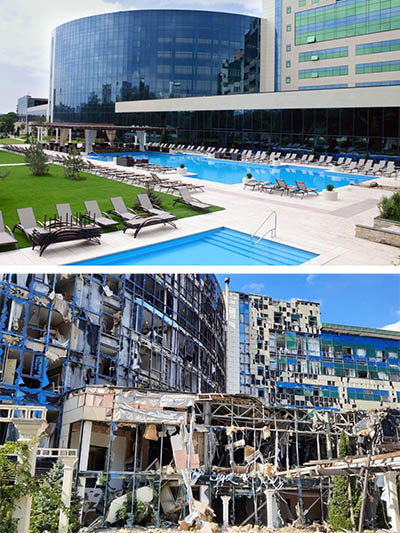
The hardest-hit areas were of course those in the combat zone. According to the State Agency for Tourism Development of Ukraine, tourist taxes plummeted up to 95% in some places, with Kherson, Mykolaiv, Donetsk, and Luhansk regions being the most affected. Odesa, Zaporizhia, Kharkiv, Sumy, and Kyiv saw declines ranging from 54% to 80%.
“There is a certain number of people who pay the city tax, which means there is still tourism, but not in the common meaning”, Marina explained. “It is mostly journalists, governmental delegations, people who bring help… So people travel to Ukraine now, but not with the touristic purpose.”
In a sad twist of fate, the Lviv region saw a 79% increase in tourist tax compared to the year before the invasion. This is only due to Ukrainians fleeing from frontline territories to safer regions. Boarding houses and dormitories in Ukraine have seen a rise in tax collection (46%), as they become temporary shelters for displaced citizens.
Overall, Ukraine’s tourism statistics tell us that the industry has taken a hit of 31% in 2022. The biggest drop in revenue has been recorded at campsites and children’s recreation camps (57%), activities of tour operators (35%), and travel agencies (27%).
In the decade before the war, more than 20 million people visited Ukraine each year. Since 2014, this number was halved.
In 2021, tourism of Ukraine was contributing 4,4 % to the GDP, which is below the global average. Ukraine tourism size only tells us that the war hit the massive potential it had.
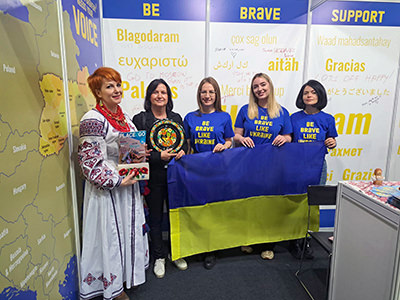
Croatia’s empathy with Ukraine
The walls of Ukraine’s booth at the Place2Go fair were covered with messages expressing heartwarming support. The national salute ‘Slava Ukraini’ was written the most frequently. But there were also slogans such as ‘Luck follows the brave’, ‘Together for peace’, ‘Stay strong’, ‘With courage to victory’, ‘History is on your side’, ‘Justice will prevail’… Someone suggested ‘Give Putin the wall’.
“We will bring this wall with us to Ukraine”, revealed Marina, proudly wearing the traditional costume of her homeland. “You know, all the energy from people’s wishes helps us win. Small drops will bring a big ocean!”
In a blue T-shirt emblazoned with yellow writing ‘Be brave like Ukraine’, Liza Konoplova, the manager of international cooperation and partnerships at the agency for the development of tourism in Ukraine, smiled in front of the wall.
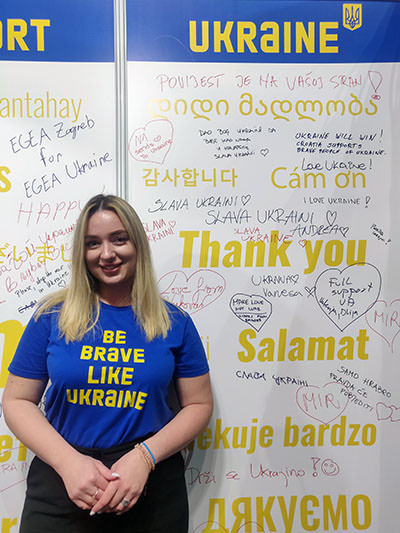
“People express their support and they are looking forward to the end of the war, and our victory of course”, she told me. “They really want to visit Ukraine after the war, and shake hands with our great people, and see what Ukraine is all about. Now that we see this interest, we feel the responsibility to work even more. Our agency is the first step.”
But the Zagreb fair was not the first address where tourism of Ukraine sought international support. ITB in Berlin and Balttour Expo in Riga were some of the previous tourist stops on the Ukrainian journey to speak up about the war and life in Ukraine.
“In Croatia, it is a bit easier at these terms,” said Liza, “because they also had the war in the 1990s, and they understand and feel us. We don’t have to explain what it is. In other countries, we just try to share our emotions, because we are all humans, and it is important to still be humans.”
Rebuilding tourism in Ukraine through purpose-driven travel
The human aspect will be important once tourism in Ukraine enters a full-scale reboot too.
“We believe that travel to Ukraine will restart through new types of unique, meaningful and sustainable travel, which is solidarity and volunteer tourism”, explained Marina Antonyuk who, besides presiding the Ukrainian tour operators, also wears a director’s hat in her own destination management company Ukrainian Incentives.
“People will come not only to see a beautiful destination, but also to show solidarity with Ukraine, and also to help communities or territories affected by war. You can really make an impact, a change, you travel for a purpose.”
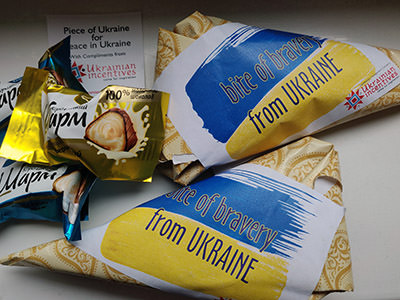
While traditional city break tourism will still have its place, especially in Zakarpattia and Chernivtsi regions, Marina predicted that tourists would increasingly seek out experiences that make a difference. It’s like sightseeing with a side of social responsibility.
“For instance, it could be corporate incentives and conferences where, instead of one day of entertainment, they go volunteering, helping at a farm, or working in the volunteer center. In solidarity tourism, people see some territories affected by war and also might go to farms, and to tourist venues or restaurants that were destroyed. As they buy their product, they help them restore their businesses.”
Solidarity and volunteer tourism as a solution for Ukraine of tomorrow was born at IMEX in Frankfurt, Marina revealed. “Our colleagues from Puerto Rico gave us this idea. They had a hurricane several years ago, which brought a huge loss to the territory. And they developed this kind of corporate volunteer tourism. It’s like fate! They paid it forward, and with this idea, we can now develop and prepare for the future start of the travel to Ukraine.”
While you are honing your future travel plans, check out which are the safest countries to visit in 2023!
Wipe-out of cultural heritage
The four-women-strong delegation is not a part of the diplomatic corps, safely tucked in beds with roses at some foreign addresses, and sipping cocktails at fancy receptions. To every tourism fair, they travel from their war-torn homeland. Many people wonder why they didn’t just leave.
“We always say that if everyone leaves the country, then there won’t be Ukraine at all”, Liza Konoplova said. “We feel this responsibility to work for the prosperity of the country and take care of its future.”
Even if she lives in Kyiv now, Liza is originally from Kharkiv, in the east of Ukraine. She can visit her hometown but at her own risk. When she returned in December, for the first time since the war started, she was shocked by what she saw. “Unfortunately, because of the common border with Russia, it’s half bombed. It is really painful to see the place where you were growing up in this condition.”
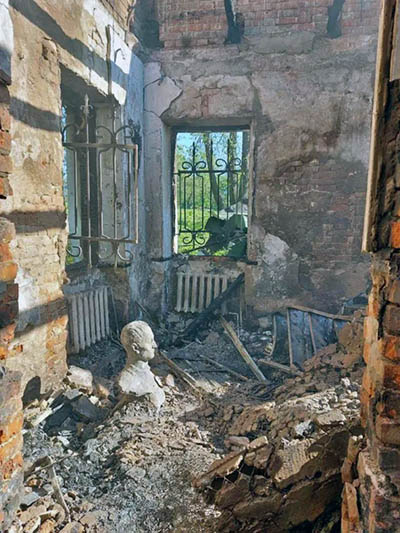
Hryhoriy Skovoroda National Museum of Literature she remembers visiting as a schoolgirl is today razed to the ground. “And this is Ukrainian heritage, which doesn’t exist anymore. You cannot understand how today there is something and tomorrow there is nothing”, she said, still shaken.
According to the Ministry of Culture, at least 1189 objects of cultural heritage in Ukraine have been destroyed or damaged, including 63 museums. In the southern regions of Kherson and Mykolaiv, the museums have been pillaged, with valuable objects taken away.
Liza called the destruction of cultural heritage a deliberate attempt to erase Ukraine’s identity. “They do it mentally, first of all, as they don’t accept that Ukraine is a separate country with its own culture and language.”
Still, there is hope that international protocols will ensure the stolen artifacts are returned to Ukraine after the war. But museums and galleries have taken preventative measures. Valuable objects have been hidden away in secure storage, while monuments have been protected with sandbags and wooden structures.
United for Ukraine: from Star Wars to Balenciaga
Buildings might have been destroyed, but the Ukrainian spirit is harder than concrete and stronger than steel. “You know what about Ukrainians? We adapt and rebuild really quickly”, Marina declared confidently. “A lot of houses in Kyiv region that have been damaged during the occupation are already being rebuilt. We continue, we adapt, we bite!”
The cultural heritage sites in the resilient capital have been preserved. From touristic infrastructure, only a 4-star Alfavito Hotel has been partly destroyed during the attack on December 31st.
But the regions in the south and the east suffered significant damage and will require a massive reconstruction effort once the war ends. The Ukrainians will not be able to do it alone.
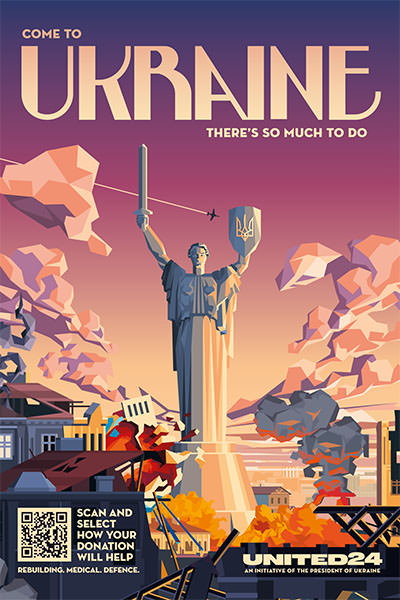
This is where the fundraising platform United24, initiated by President Volodymyr Zelenskyy, comes in. With A-list ambassadors ranging from Barbra Streisand and Bear Grylls to Demna, the creative director of Balenciaga, the project aims to collect donations for Ukraine. Even the Force is with the country, as Mark Hamill aka Luke Skywalker, whose voice now warns Ukrainians about air raids, also joined the cause.
Between handing out Kyiv-produced Royal Charm chocolate sweets, wrapped in the colors of the Ukrainian flag and accompanied by a message of peace, Marina also distributed info on how to join United24.
“We present postcards with QR code which leads to the United24 web portal where people can donate to Ukraine. And they can choose directions for help. They can support defense and demining, medical aid, or rebuilding of Ukraine, any cause that speaks to their heart.”
It seems plenty of hearts are speaking up. As of 4 April 2023, this global initiative raised over USD 305 million to support Ukraine’s recovery.
Ukraine is home to a real-life heart-shaped island! You can find it in Sofiyivka Park or in our selection of the world's heart islands.
Ecological catastrophe in the making
Undoing the damage to Ukraine’s nature will take decades. Unless you pack a metal detector as hiking gear, many places could be off-limits for tourists.
Already in some parts of Kyiv region, you can’t just venture into a forest for a walk. Ukraine is now the most mined territory in the world, Marina said. “We are not allowed to go to any places beyond obvious roads, because there is a risk of landmines everywhere.”
Russian warships played Minesweeper even in the Black Sea. “For instance, in Odesa, you cannot swim. You can go to the beach, but not swim in the sea. There were cases where people ignored the restrictions, and were killed by mines.”
Animals are even more defenseless against war. Dozens of natural reserves and national parks were occupied and became the protection zones for Russian troops. Employees reported them driving heavy machinery over steppes, cutting down trees, digging trenches, mining territory, and blowing up wild animals.
As if constant military flights over these nature zones were not enough stressful for fauna, Russians went even further, disobeying existing laws and conventions.
In the case of Dzharylgatsky National Nature Park in the Kherson region, they dared to register it under Russian law, with documents stating that “the main activity of the park is hunting, trapping and shooting wild animals”.
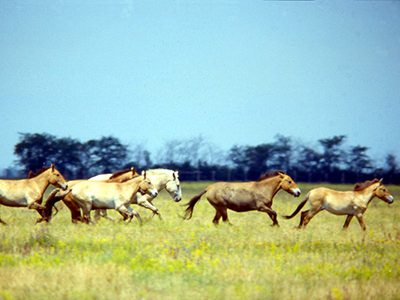
Askania-Nova, the oldest steppe reserve in the world, and one of the seven natural wonders of Ukraine, the potential backbone of tourism of Ukraine, is protected by UNESCO now only on paper. On 24 March 2023, Russian forces took control of the biosphere reserve and decided to make their base there.
In this important ecosystem, Askania-Nova led the world’s largest captive-breeding program for the endangered Przewalski’s horses. We know that the population of these horses barely survived World War II when the Germans were the occupiers and shot down the valuable group of these Mongolian wild horses. Is history repeating itself?
The loss of these parks and reserves isn’t just a blow to Ukraine tourism potential; it’s an ecological disaster. Experts are calling this an ecocide that could take decades to repair. These parks might even turn into new exclusion zones, such as the one in Chernobyl.
War had a devastating impact on the population of northern white rhinoceros too. Read about their struggle in our interview with Matjaž Krivic!
Bravery on display: Ukraine vs. 404
Ukrainian booth at the Place2Go tourism exhibition also featured blue-and-yellow stickers, sporting messages like ‘Made of bravery’ or ‘Ukrainian bravery needs your voice’. These mottos are a part of the branding campaign celebrating the heroic spirit of those who stood up against oppression.
“In a way, Ukraine is a brand now. Everyone is very impressed by how the brave people of Ukraine keep fighting for their country”, explained Liza, beaming with pride. “At the very beginning of the war, the world predicted that Russia would occupy Ukraine in three days maximum. And this never happened, and will never happen. We just try to share this bravery with other people. And say that only brave people can make this world better.”
For Ukrainians, attending tourism exhibitions goes beyond just promoting a destination. As Marina pointed out, it’s a platform “to tell the truth about the war, to seek emotional and humanitarian support, and to prepare for the future”.
All creative means are employed for these causes. Take the large map of Europe on the wall, for instance. It shows the provinces of Ukraine, as well as other European countries, but I noticed a punchy detail: Ukraine’s eastern neighbor is labeled as – 404.
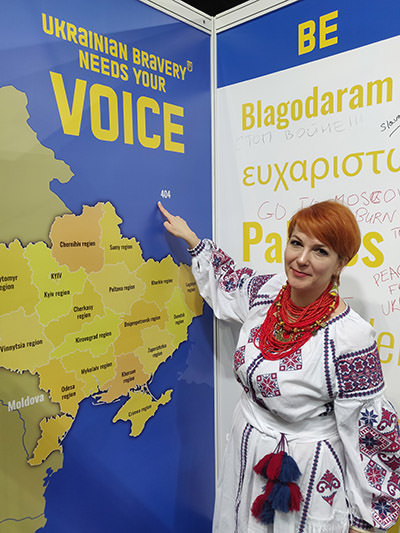
“Yes, because this is what they are, and this is what they will be when we finish with them!”, said the fiery red-haired tour operator.
In the digital world, 404 is an error code, typically indicating a broken or dead, non-existing link. This ‘not found’ message is normally displayed when the original web page has been moved or deleted.
“This is the concept of a mistaken country, which nowadays, in a civilized world, still wants to make wars like in medieval times”, Marina explained. “So on the map, this country is undefined, it’s like a mistake. Because there is something wrong with this country. Not something, there’s a lot of wrongs.”
In the middle of the war with Ukraine, Vladimir Putin took a break to open the Sun of Moscow, one of the 10 biggest Ferris wheels in the world.
Ukraine tourism and its future – Conclusion
From roars in the caves to words as a means of communication, the evolution of humanity should have taught us that war is a senseless act with a steep price. Yet, it continues to exist and leaves behind a trail of destruction in the form of lost lives, demolished buildings, and lost natural resources. These scars will be felt long after the last shot is fired.
One doesn’t need glossy brochures to spark interest in the return of tourism to Ukraine
The war also has a less visible price tag. It changes us. It charges our emotions in ways that nothing else could. The trauma sneaks into us, making us courageous and vulnerable at the same time.
On two occasions, something fell somewhere in the Place2Go exhibition hall, producing a cracking sound. Most of us would not even notice it, but the instinctive wince of the Ukrainian delegation was revealing how deeply these wounds go.
Still, these four brave women warriors were eager to do their part, standing out at tourism fairs with their optimism. Armed with simple creative tools, such as stickers and sweets, they showed that one doesn’t need glossy brochures to spark interest in the return of tourism to Ukraine. Visitors were drawn to their booth, curious to learn more about a country that refuses to be defined by its war with Russia.
Ukraine is facing immense challenges. Still, its people are determined to showcase their bravery and resilience. The end of the war may not be close, but Ukraine’s tourism industry is not giving up, despite being heavily affected. It looks for new ways to promote itself as a future that’s knocking at our door.
Did you like this article on Ukraine tourism?
Pin it for later!
Disclosure: This post may contain affiliate links, which means if you click on them and make a purchase, Pipeaway might make a small commission, at no additional cost to you. Thank you for supporting our work! The photo of the Przewalski's horses in Askania-Nova by 2bpatchett is licensed under CC BY-SA 2.0.

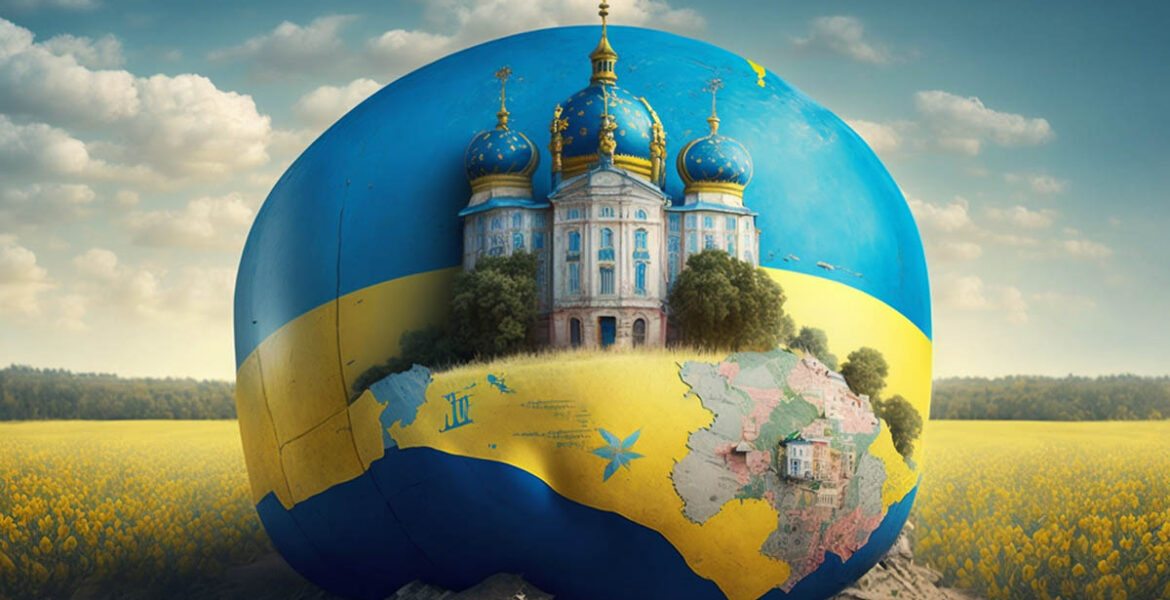
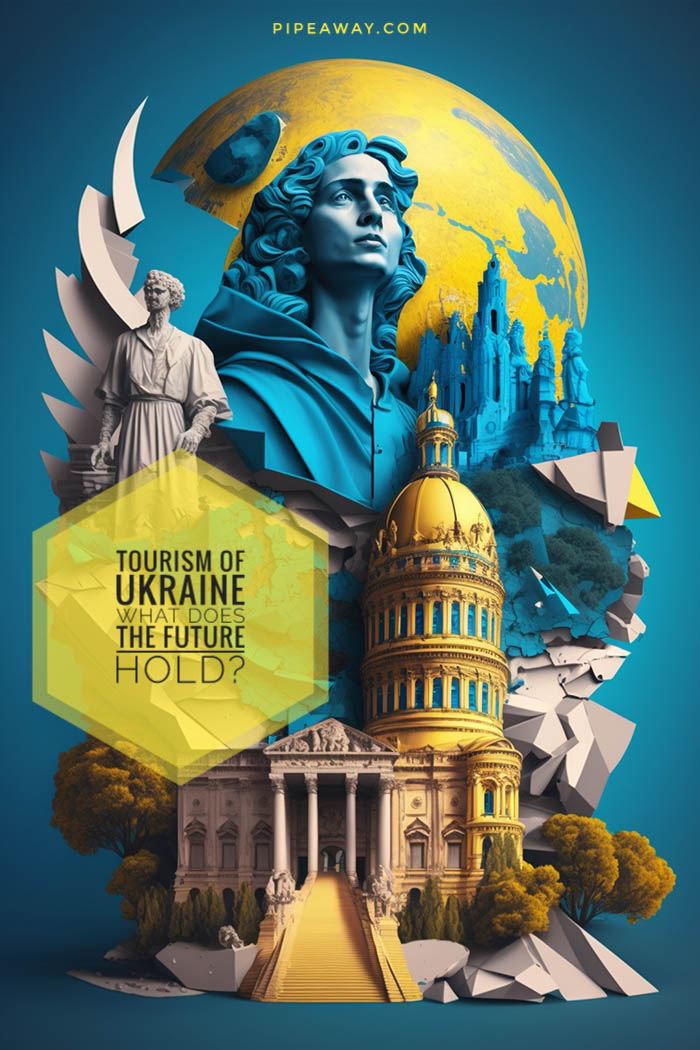
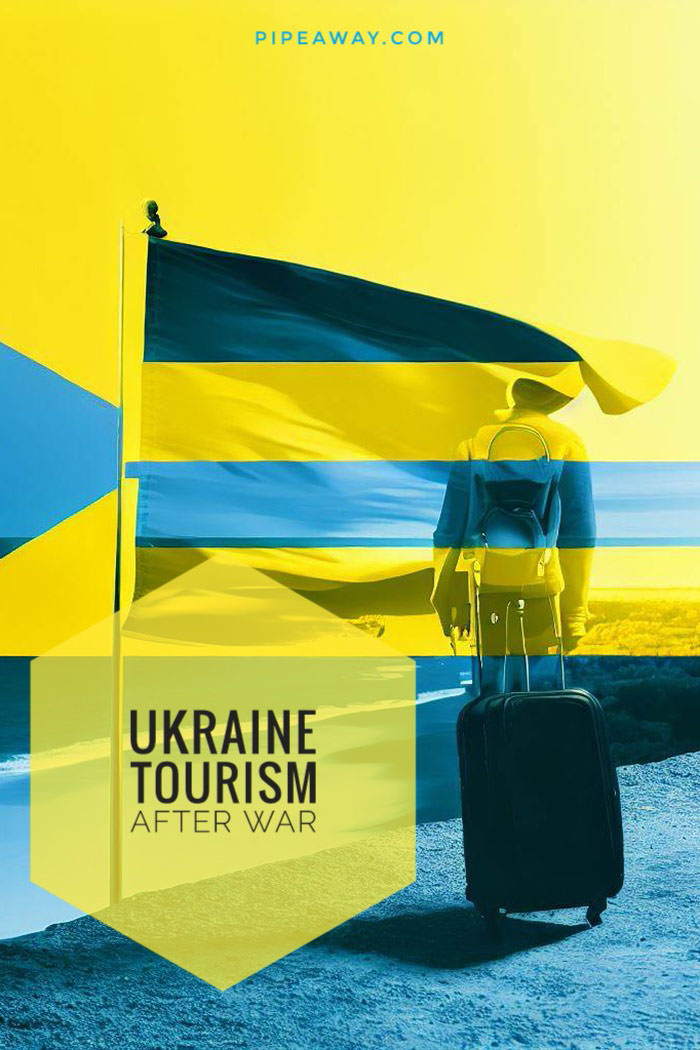

Let’s hope the war in Ukraine ends fast and that Ukraine wins. So devastating seeing and reading about all that’s lost and destroyed.
Dear Cosette,
Thank you for taking the time to read the article and leaving a comment.
I completely agree with you that the war in Ukraine has caused immense devastation.
Despite the challenges, tourism in Ukraine shows the resilience the Ukrainian people are now known for.
We can only hope for a swift end to the war so the country can finally head forward.